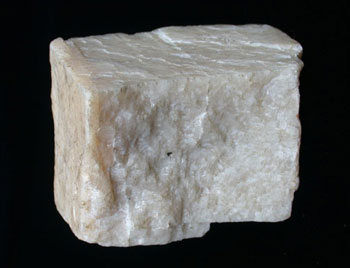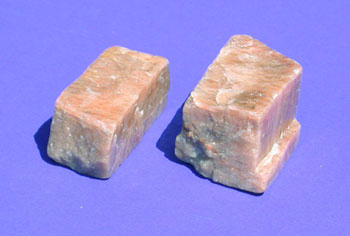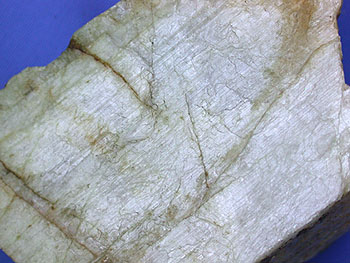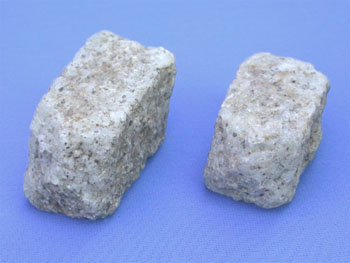
|
| Feldspars have two cleavage planes that intersect at 90°. Fragments of pure feldspar crystals thus tend to form rectangular blocks with irregular ends. Feldspars have vitreous lusters and occur in opaque shades of white to gray to pink to very dark gray. Other rarer colors are also possible!
The feldspars are divided into two main groups: Potassium feldspar ("K-spar") and plagioclase ("plag"). Both display two cleavages and an overlapping range of colors, but only plagioclase displays tiny grooves on one cleavage known as striations. The photos below show several examples of feldspar. Click on any photo to enlarge! |
|
Both plagioclase and K-spar are commonly white; the lack of striations suggests that this is K-spar. |
 |
|
There are no striations. |
 |
|
Broken feldspars do not always make perfect cleavage blocks for many reasons. Just look to see two planes intersecting at 90°!. The dark and pink samples display the tiny veinlets commonly seen in K-spar. |
 |
|
Click here to see the right-angle cleavages of this sample. |
 |
|
The blocky shape of well-formed crystals plus the two cleavages at right angles to each other mean that feldspar crystals in rocks tend to have straight edges and planar surfaces. |
 |
Go back to Common Minerals page
Return Home
|
|
|